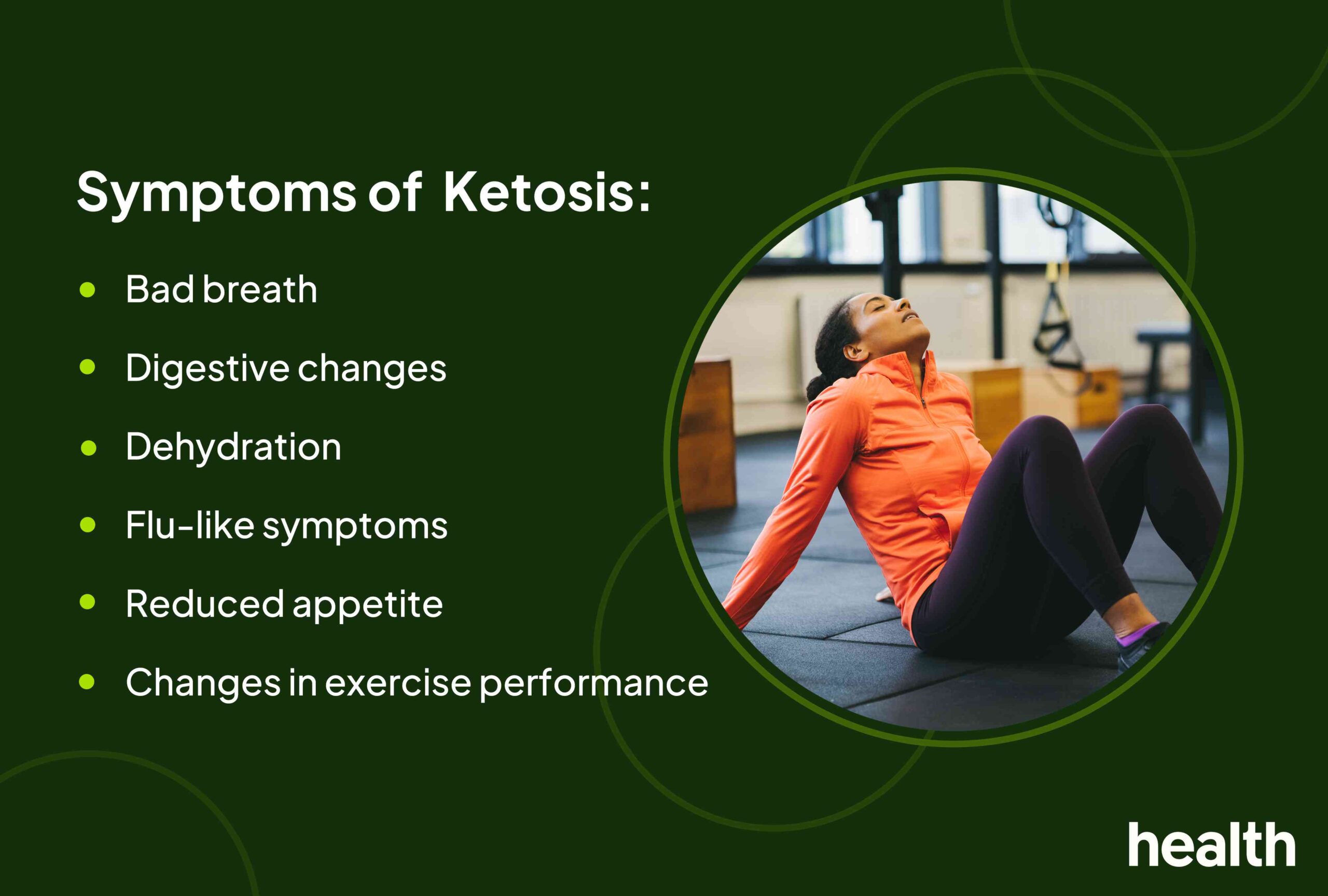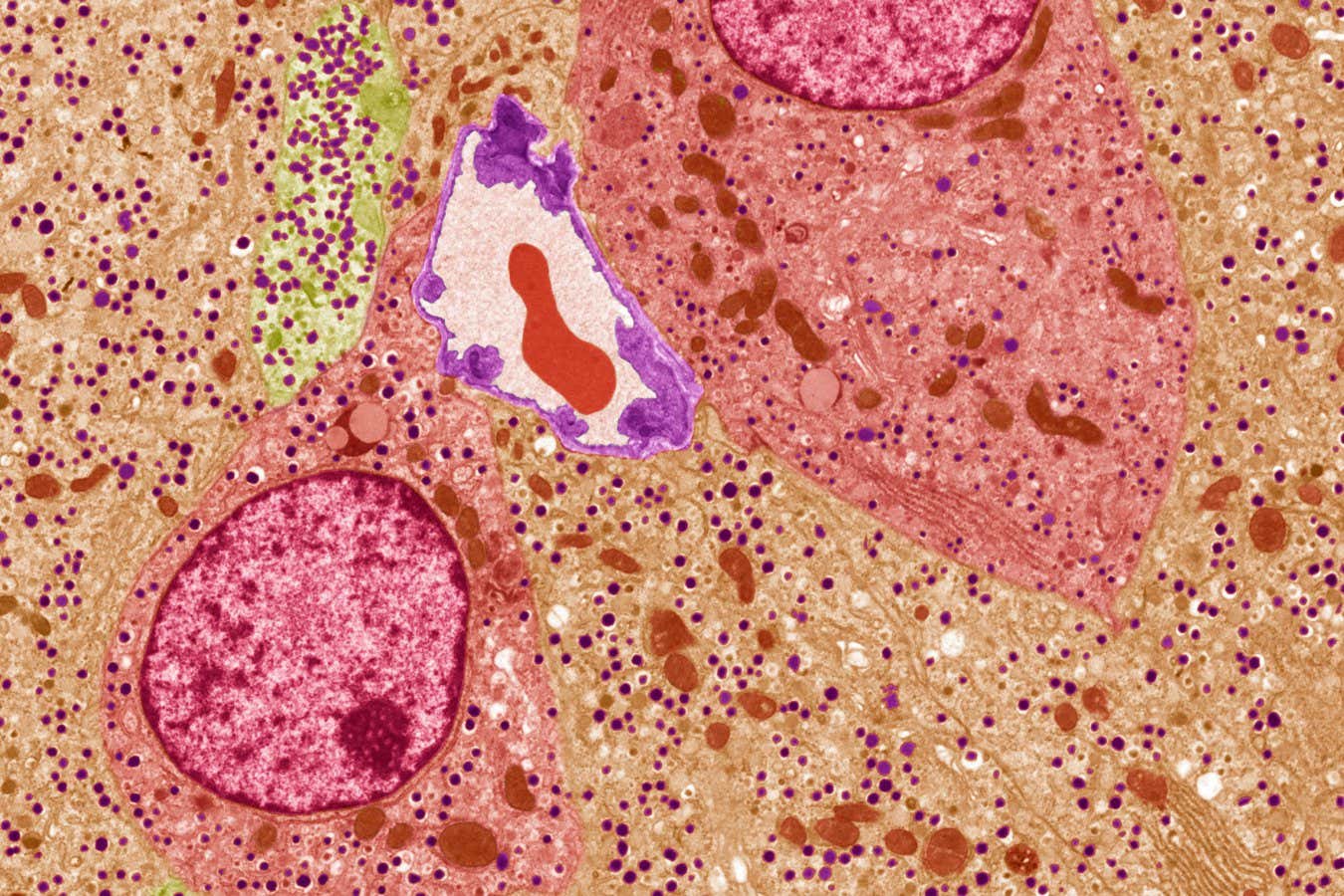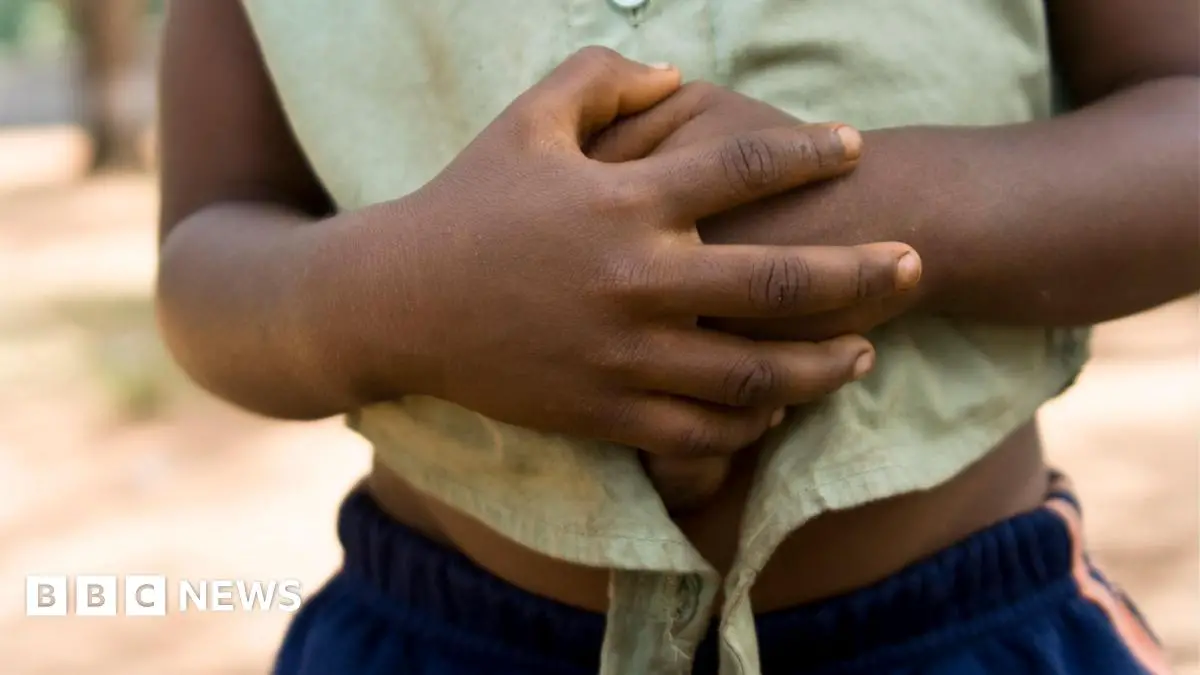
:max_bytes(150000):strip_icc():format(jpeg)/Health-Ketosis-horiz-67d8fb66cbf74309b4b942abe5fdf696.jpg)
Ketosis is a state where the body is forced to use fat instead of carbohydrates for energy. This usually happens after fasting (refraining from eating) or after a few days of following a low-carb and high-fat eating plan, like the ketogenic—or “keto”—diet.
Ketosis can temporarily trigger flu-like symptoms, bad breath, dehydration, and more. Always reach out to a healthcare provider if symptoms become severe.
Design by Health / Getty Images
Bad breath—or “keto breath,” as it’s anecdotally known—can be a side effect of eating a low-carb and high-fat diet.
When the body is in ketosis, it breaks down fat for fuel and produces ketones. Ketones are chemicals produced by your liver when your body breaks down fat for energy. Your body can use them as an alternative energy source.
Ketones build up in the body and are then naturally released through urine or the breath—which can lead to the smell in question. Some keto diet enthusiasts liken this scent to nail polish remover, while others notice what they describe as a “fruity” scent or a metallic aftertaste in their mouth.
Stomach-related symptoms can occur as the body navigates through ketosis. The digestive system may have difficulty absorbing the influx of high-fat foods at first, triggering possible effects like:
- Constipation: Three bowel movements or less per week
- Diarrhea: Loose or watery stools
- Bloating: An uncomfortable feeling of fullness in the stomach
- Nausea: May or may not be accompanied by vomiting
Some research suggests that diets focused on high-fat foods might prompt gut inflammation, leading to potential digestive discomfort and related symptoms.
The keto diet is also low in fiber, which can negatively affect the gut microbiome. The microbiome includes microorganisms, or microbes, such as bacteria and fungi. It plays an important role in how the body functions—including the immune system, hormones, and metabolism.
Fiber helps maintain bowel movements and prevent conditions like hemorrhoids and diverticular disease, which includes diverticulosis (pouches form in the lower colon and can push through weak spots) and diverticulitis (pouches in the colon become inflamed or infected). These conditions can cause digestive symptoms.
As the body enters the ketosis state, you may feel quite thirsty.
Water loss can happen as the body burns fat during ketosis. Rapid water loss and high ketone levels during this period can lead to an imbalance of electrolytes—charged minerals in blood, sweat, and urine that help regulate the nervous system, hydration, muscle function, and blood pH (acidity). It can also lead to dehydration, which means that your body loses more fluid than it takes in.
Signs of dehydration include:
Some people report experiencing flu-like symptoms during ketosis. This is anecdotally called the “keto flu.”
These flu-like symptoms include:
- Headache
- Nausea
- Fatigue
- Dizziness
- Brain fog
- Decreased energy
The severity of these symptoms typically ranges from moderate to severe. Symptoms may last anywhere from three days up to about one month.
Feeling less hungry than usual is another possible side effect of ketosis, though the verdict is still out on the exact science behind this symptom.
Some research points to changes in hunger-related hormones that happen during ketosis in combination with an increase in dietary protein with the keto diet. Other findings suggest that the elevated presence of ketones affects hunger signals in the brain, which may suppress appetite.
As your body adjusts to the beginning stages of ketosis, you may notice a temporary reduction in athletic performance.
For example, one study found that after four days on a ketogenic diet, a group of athletes performed worse on high-intensity cycling and running tests compared to those who’d been on a high-carbohydrate diet for the same amount of time.
This might be due to the quick weight loss that can happen during ketosis, which could have an initial effect on exercise function and performance.
Always check with a healthcare provider before starting a new diet like the keto diet—particularly if you have an underlying health condition or are pregnant or breastfeeding. Consuming fewer carbohydrates may not be a safe eating pattern for everyone.
While some mild to moderate symptoms can be expected when entering into ketosis, seek medical attention if symptoms persist or start to become severe, painful, or bothersome. Here are two red flag complications to look out for:
- Dehydration: Your body doesn’t have enough fluid to function properly. Signs include extreme thirst, dark-colored urine, dizziness, dry mouth, and fatigue.
- Ketoacidosis: Your blood becomes dangerously acidic because of high levels of ketones in your bloodstream. While this typically occurs in people with diabetes (diabetic ketoacidosis, or DKA), it can also happen in people without diabetes who are on the keto diet. Signs include excessive thirst, frequent urination, rapid breathing, nausea and vomiting, and extreme fatigue.
Ketosis is a state where the body burns fat instead of carbohydrates for fuel. It can lead to a variety of symptoms that may range in severity, including digestive discomfort, dehydration, headache, bad breath, and fatigue.
While these signs of ketosis can last anywhere from a few days to several weeks, consider checking with a healthcare provider if you notice symptoms that seem to be getting worse or persisting.







